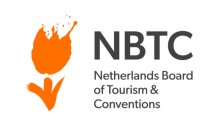- Home
- Research
- Professorships
- sustainable transport and tourism
- envisioning tourism in 2030

Envisioning Tourism in 2030
In the Glasgow Declaration (2021), the tourism sector committed to reducing its CO2 emissions by 50% by 2030 and achieving net-zero emissions by 2050. This scenario study aims to explore how these ambitious goals can be achieved.
What was the goal of this research?
The goal of this research was to identify strategies for meeting the tourism sector's CO2 reduction targets as outlined in the Glasgow Declaration. The study focuses on understanding how emissions from various sources, including accommodation, transportation, and aviation, can be managed to achieve these targets.
What method was employed?
The study examined emissions from different sectors within tourism, including accommodation, private cars, rail, buses, and aviation. It considered the impact of sustainable synthetic e-fuels and the potential for new aircraft technologies, such as hydrogen and fuel cells/electric engines, on reducing emissions. The research projected future scenarios up to 2050 to evaluate how these technologies and policies could contribute to meeting the sector's emission reduction goals.
What findings did we uncover?
The research found that emissions from accommodation, private cars, rail, and buses can be reduced in line with the Paris Climate Agreement. However, aviation emissions are more challenging to address and will require the adoption of sustainable synthetic e-fuels and a global halt on aviation growth until 2050. After 2050, advancements in aircraft technology, such as hydrogen-powered and electric engines, are expected to support a return to air travel growth. The study indicates that while the total number of tourism trips, nights, and the overall tourism economy can grow, the distances travelled will increase at a slower rate until 2050.
What is the timeline of this project?
July – December 2022
Who are our funding partners?



Interested in this project or other publications?
BUas uses Pure for all research publications; the up-to-date overview of all BUas knowledge output.